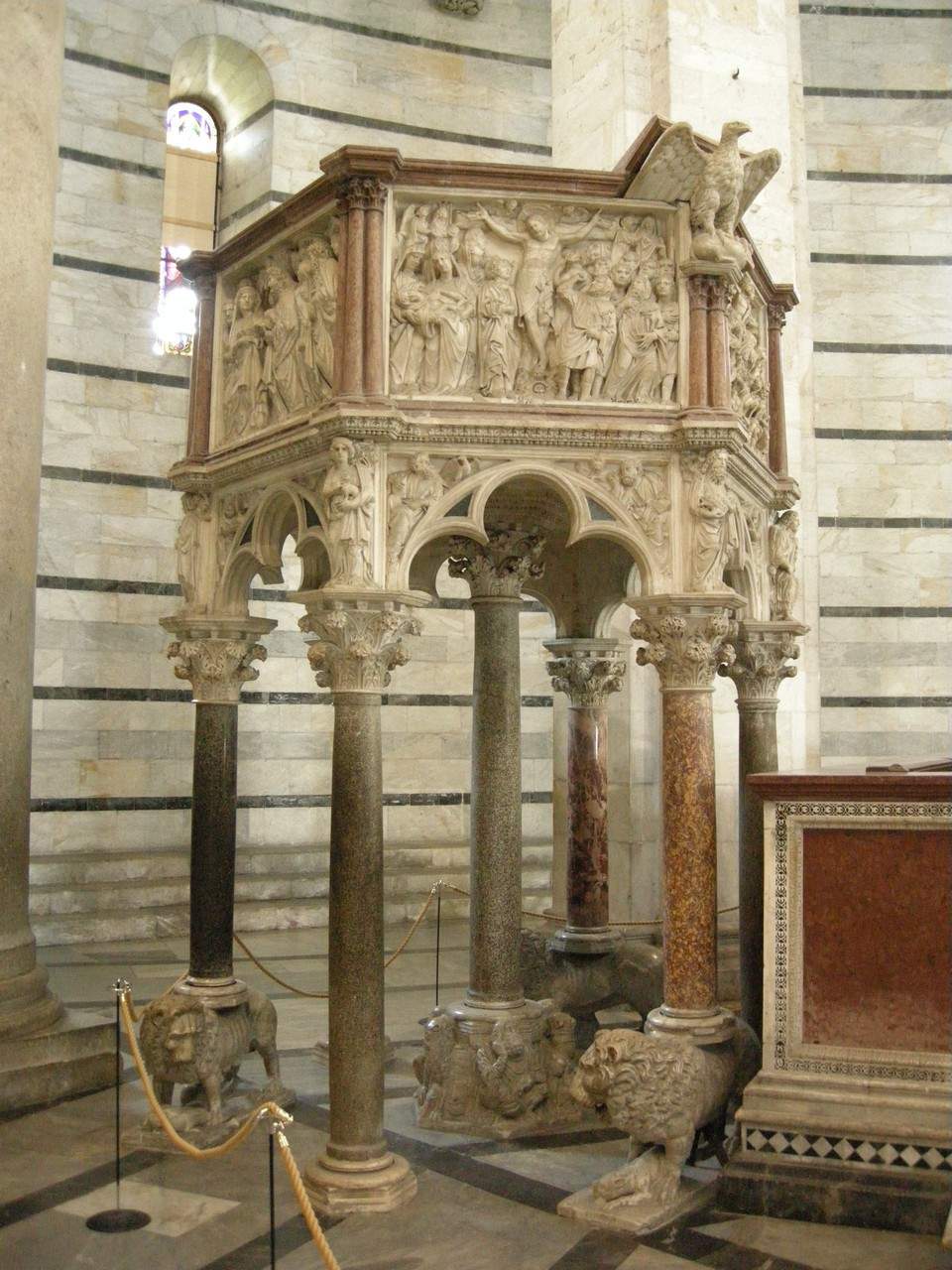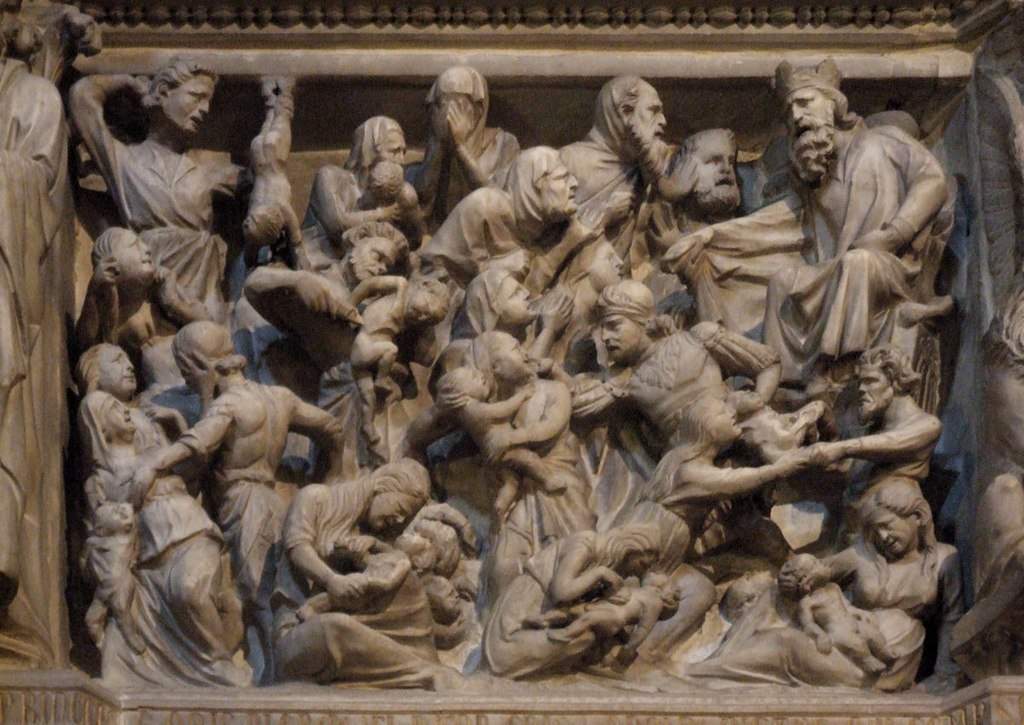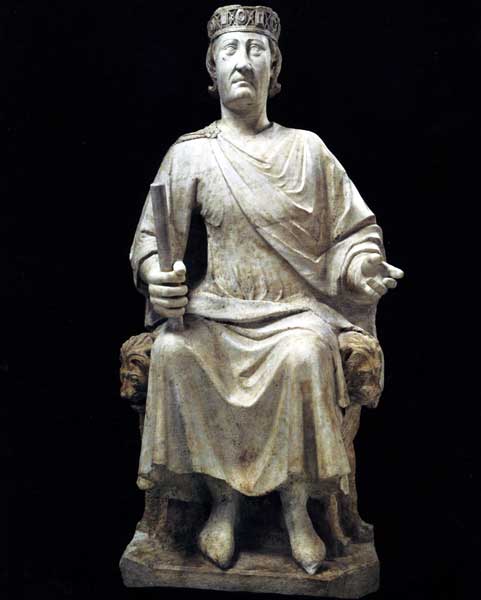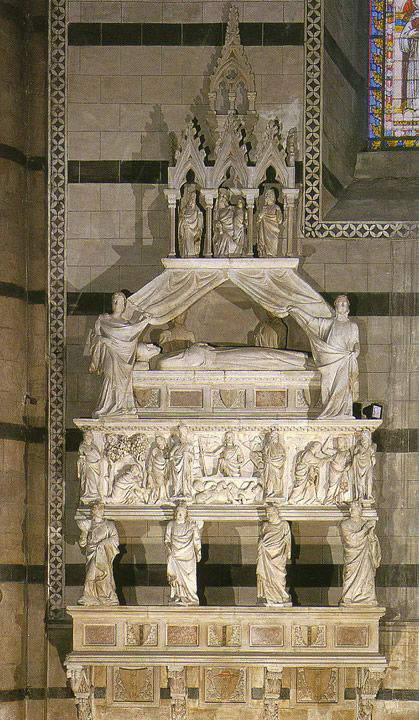The beginning of the 13th century coincided with profound renewals affecting Italian sculpture. Two phenomena in particular helped accelerate the renewal process: the rediscovery ofclassical art on the one hand and the influence of contemporary French sculpture on the other. The first phenomenon characterized especially the art of southern Italy, coinciding with the presence of Frederick II of Swabia, who ruled the kingdom of Sicily throughout the first half of the thirteenth century.
In fact, Frederick II, who was a capable ruler and attentive to the arts to literature (he himself was a poet belonging to the so-called Sicilian school that was formed around his court in Palermo), promoted the recovery of the art of ancient Rome, even with clear celebratory intentions, out of a sort of comparison between the Empire he ruled and the ancient Roman Empire and out of a desire to continue in some way the myth of the Empire of ancient Rome. Art therefore had the task of responding to these needs, and to respond adequately required comparison withancient art. And inevitably, the recovery of symbols from the ancient repertoire also meant a rapprochement with the modes of Roman art.
The first and main architect of the recovery of Roman art in the 13th century was the sculptor Nicola de Apulia, better known as Nicola Pisano (Apulia?, c. 1210 - Siena? 1278/84): from Apulia, a region that played for art the role that Sicily had played for literature, Nicola moved to Pisa where his study of ancient art could be fulfilled and perfected since in the Pisan area for several years (we are in the middle of the century, just after the 1950s) there had been the recovery of finds from antiquity (sarcophagi, reliefs... ), so Pisa represented the ideal place where he could put to good use the research begun in southern Italy. And the reference to ancient models could only look precisely to sculpture, because no paintings had come from classical antiquity, only sculpted works: it is also for this reason that in the thirteenth century sculpture evolved more rapidly than painting.
Thanks to this careful study, Nicola Pisano’s sculpture achieved results of naturalism and plasticism that were as yet unknown in Western art. To this was then added, as anticipated, the second phenomenon that connoted thirteenth-century art, namely, the arrival of suggestions derived from French sculpture: with the dramatic nature of the latter, Nicola Pisano’s art was able to achieve an expressive force that was not indifferent. This is fully demonstrated by the pulpit of the Pisa Baptistery, circa 1255-1260.

Nicola Pisano’s work was continued by his two main pupils: his son Giovanni Pisano (Pisa?, c. 1248-Siena, after 1314), who developed the “dramatic” component of his father’s art, reaching high heights of expressionism (see the Massacre of the Innocents from the pulpit of Sant’Andrea in Pistoia, made between 1297 and 1301) and Arnolfo di Cambio (Colle di Val d’Elsa, c. 1240-Florence between 1302 and 1310), who, on the contrary, developed the “classicist” component, preferring solid volumes and plasticity (Statue of Charles of Anjou, 1277, Rome, Capitoline Museums). The work of Giovanni Pisano and Arnolfo di Cambio was also important for the developments of painting in the second half of the 13th century. In fact, when painting wanted to begin to free itself from dependence on Byzantine models, lacking valid reference figures in painting, the main artists to be inspired by were precisely Giovanni Pisano and Arnolfo di Cambio. The latter was, moreover, the creator of an interesting contamination between sculpture and architecture (most evident in his ciboriums, such as the one in St. Paul Outside the Walls in Rome) destined to inspire artists throughout the 14th century.
During the next century, there was also no shortage of personalities who knew how to spread the achievements they had reached in Tuscany (indeed, both Giovanni Pisano and Arnolfo di Cambio worked mainly in major Tuscan cities, such as Florence, Pisa, and Siena): the key figures of the century, as far as sculpture was concerned, were Giovanni di Balduccio (Pisa, c. 1300 - c. 1349), who spread the Tuscan language in northern Italy, and Tino di Camaino (Siena, c. 1280 - Naples 1337), who in addition to being a sculptor with great originality and a strong innovative charge (he in fact invented models, especially in the field of funerary monuments, that set the school: for example, that of Cardinal Riccardo Petroni, 1317-18, Siena, Duomo), with his move to Naples in the third decade of the 14th century, spread the Tuscan ways to the south of the peninsula, imposing his language of composed, balanced and severe plasticity.



 |
| Gothic sculpture. Origins, development, styles, artists |
Warning: the translation into English of the original Italian article was created using automatic tools. We undertake to review all articles, but we do not guarantee the total absence of inaccuracies in the translation due to the program. You can find the original by clicking on the ITA button. If you find any mistake,please contact us.